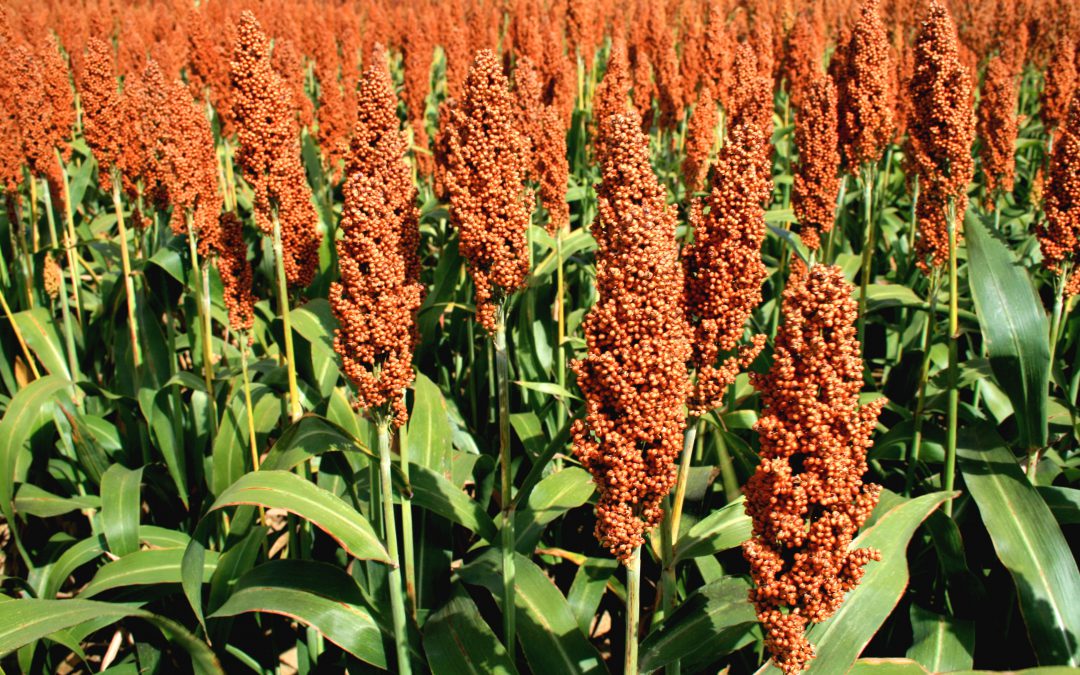
Grain sorghum is a staple crop that stands resilient against harsh environmental conditions, offering a reliable yield where other crops might falter. For farmers looking to maximize their return on investment while maintaining flexibility across different growing conditions, Pannar’s grain sorghum package offers a truly unparalleled solution. With a focus on innovation and adaptation, Pannar’s sorghum hybrid, particularly the PAN 8625 and PAN 8816, represent the gold standard in modern agriculture.
The Pannar Legacy: A Tradition of Excellence in Sorghum Breeding
Pannar sorghum breeding programme has been running since 1978 and is one of the oldest in the world. This legacy is built on a foundation of rigorous research, tapping into a vast pool of diverse genetic resources to create hybrids that are not only high-yielding but also adapted to the specific challenges of local environments. Pannar’s sorghum breeding programme is a testament to our commitment to agricultural excellence, ensuring that our hybrids are engineered to deliver under various climatic conditions.
PAN 8625: A Hybrid that Excels in Adaptation and Yield Performance
The PAN 8625 variety is a standout in Pannar’s grain sorghum portfolio. This hybrid is widely adapted, meaning it performs exceptionally well across a range of environmental conditions, making it a versatile choice for farmers throughout South Africa.
Key Features of PAN 8625:
- Outstanding Yield Performance: PAN 8625 consistently delivers high yields, making it a reliable option for farmers seeking to maximize productivity.
- Bitter Grain Type: Classified as GH, this hybrid is known for its bitter grain, which has the added advantage of being bird-resistant – a significant benefit in regions where birds can cause substantial crop losses.
- Good Malt Quality: Despite its bitterness, PAN 8625 offers good malt quality, making it a versatile choice for different markets.
- Medium Plant Height with Good Standability: This hybrid boasts a medium plant height, which contributes to its excellent standability – a critical factor in ensuring that the plants remain upright and are easy to harvest.
- Tolerance to Head Smut: PAN 8625 has been bred with good tolerance to head smut, a common and often devastating sorghum disease, ensuring the crop’s health and vitality throughout the growing season.
PAN 8816: The hybrid for yield potential and stability
For farmers who prioritise yield potential and stability across varying conditions, PAN 8816 is an excellent choice. This variety embodies the qualities that have made Pannar a trusted name in sorghum production.
Key Features of PAN 8816:
- Excellent Yield Potential and Stability: PAN 8816 is designed to perform consistently across different environments, offering farmers peace of mind that their investment will pay off.
- Uniform Growth Habit and Good Standability: This hybrid is not only productive but also aesthetically pleasing; with a uniform growth habit that ensures ease of management and harvesting.
- Large-Seeded Grain with High Bushel Weight: The large, dense seeds of PAN 8816 contribute to its high bushel weight, making it a valuable addition to any grain production programme.
- Good General Leaf Disease Tolerance: PAN 8816 has been developed with a strong tolerance to general leaf diseases, reducing the risk of crop loss and ensuring a healthy yield.
- Good Head Smut Tolerance: Just like PAN 8625, PAN 8816 has been bred to resist head smut, making it an ideal choice for regions where this disease is prevalent.
- Open Head (Panicle) Design: The open head characteristic of PAN 8816 facilitates effective spraying, ensuring that any necessary treatments are applied efficiently and thoroughly.
A Grain Sorghum Package Tailored for Success
Pannar’s grain sorghum package is not just about providing high-quality seeds; it’s about offering a
comprehensive agronomic solution that maximizes yield and stability while adapting to the unique
challenges of different growing environments. The PAN 8625 and PAN 8816 hybrids exemplify this
approach, each bringing a suite of benefits that can be tailored to the specific needs of the farmer.
Agronomic Best Practices with Pannar’s Sorghum Hybrids

To get the most out of PAN 8625 and PAN 8816, it’s crucial to adhere to some key agronomic practices. For instance, phosphorus application should be carefully managed. Generally, phosphorus is applied in a band, but if the required quantity exceeds the amount typically applied in a fertiliser mixture, adjustments
should be made. Optimal phosphorus concentration is approximately 17 mg P kg-1 when applying between 5 and 11 kg P ha-1 at planting. Depending on the soil’s clay content, you may need to adjust
phosphorus application to maintain soil health and crop performance.
Potassium management is another critical aspect. In sandy soils with less than 10% clay, potassium
requirements should be calculated according to crop needs (4 kg K ton-1).
For medium-textured soils, aiming for a concentration of at least 80 mg K kg-1 is recommended. Potassium is typically placed in the band using fertiliser mixtures, but care should be taken not to exceed recommended levels to prevent nutrient imbalances.
Weed control is vital, particularly during the early growth stages of sorghum, where the plants are most
vulnerable. Pannar’s hybrids, with their robust growth and disease tolerance, give farmers a head start, but maintaining a clean field through mechanical or chemical weed control methods is essential to ensure optimal crop development.
Pest and Disease Management: Safeguarding Your Investment
Grain sorghum, like all crops, is susceptible to pests and diseases. However, Pannar’s hybrids are bred with disease resistance in mind, significantly reducing the risk of major infestations. For instance, both PAN 8625 and PAN 8816 offer good tolerance to head smut – a disease that can devastate sorghum crops if left unchecked.
Additionally, PAN 8816’s good general leaf disease tolerance helps to protect against common sorghum diseases such as leaf spot and rust. In terms of pest control, vigilance is key. Sorghum midge, aphids, and stalk borers are some of the primary pests that can affect grain sorghum. Regular monitoring and timely application of insecticides, as per the manufacturer’s instructions, will help keep these pests under control.
Harvesting and Post-Harvest Management
When it comes to harvesting, mechanical combining is the method of choice for grain
sorghum. The robust standability of Pannar’s hybrids ensures that the plants remain upright, making the harvesting process more efficient and reducing the risk of grain loss.
After harvesting, grading and marketing are the final steps in the production process. Pannar’s sorghum
hybrid, with their good malt quality and high bushel weight, are well-regarded in the market, ensuring a
good return on your investment.
Pannar’s Commitment to Agricultural Success
At the heart of Pannar’s grain sorghum package is a commitment to excellence in every aspect of crop
production. From the careful selection and breeding of our hybrids to the comprehensive support provided to farmers, Pannar ensures that you have everything you need to achieve outstanding results. Pannar sources their germplasm from a broad pool of diverse genetic and then test it rigorously in their local evaluation programme to ensure it suits local growing conditions.

The Pannar® brand grain sorghum package maintains an excellent record of performance. The PAN 8625 and PAN 8816 hybrids are more than just seeds – they are the culmination of decades of research, innovation, and a deep understanding of what it takes to succeed in agriculture.
By choosing Pannar, you are not just planting a crop; you are investing in a future of agricultural success,
supported by a partner who understands the unique challenges and opportunities of South African farming.
For more information contact Pannar on
www.pannar.com


2 Responses
I need 10kg of sorghum seed. Where should i get it. How much
Good morning
Thank you for your enquiry.
Pannar will contact you personally and assit you.
Regards
Nufarmer Team